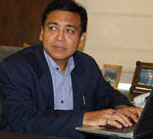

The Securitisation and Reconstruction of Financial Assets and Enforcement of Security Act 2002, (SARFAESI or the Act) has been an important legislation in the history of laws relating to enforcement of security interest created in favour of banks and financial institutions.
With the enactment of the Recovery of Debts Due to Banks and Financial Institutions Act 1993 (DRT Act), the banking sector expected that most of the non-performing assets (NPAs) would be easy to recover, as against the conventional system of recovery of loan through civil courts where considerable time, money and efforts was required to recover debt.
This Act provides for three alternative methods for recovery of non-performing assets (NPA):
- securitisation,
- asset reconstruction, and
- enforcement of security without intervention of the court.
Procedure to Invoke Remedy under SARFAESI
Under the SARFAESI, NPAs should be backed by securities charged to the bank by way of hypothecation or mortgage or assignment.
An exhaustive procedure has been laid down under the SARFAESI and rules defining the manner in which bank may exercise against the delinquent borrower to enforce the security interest in the asset.
Invocation of the Act for enforcement of security is triggered by classification of the account as NPA by the banks/financial institutions ('the secured creditors').
In terms of the present Reserve Bank of India guidelines, in case any amount which is due and payable by the borrower but has not been paid for more than 90 days, said account can be classified as NPA.
Upon classification of account as NPA, the secured creditor can issue notice to borrower including the mortgagors/guarantors calling upon them to pay the entire due amount within a period of 60 days.
If full payment is not made by the borrower within the stipulated 60 days time period, the secured creditor has the right to take possession of the secured asset including the right to transfer by way of lease, assignment or sale for releasing the secured asset.
Further, the secured creditor can take control over the management of the business of borrower where substantial part of the business of the borrower is held as security for the debt. Where the asset is financed by more than one secured creditor, the notice can be issued only with the consent of those secured creditors representing not less than three-fourths in the value of the amount outstanding.
Upon issuance of notice, if the borrower makes any representation against the proposed action of the bank, the authorised officer of the secured creditor needs to examine the representations with a judicious mind. Before this exercise is done and the borrower has suitably replied, secured creditors cannot take possession of the secured asset and management of business of the borrower.
Any person aggrieved on account of taking over the possession of the secured asset/business of the borrower, may file an application under section 17 of the Act before the concerned Debt Recovery Tribunal seeking declaration that the recourse taken by secured creditor is invalid and for restoration of possession of secured asset to the borrower.
It is interesting to note that strong checks and balances have been put in place to ensure there is no abuse of powers vested in the banks/lenders.
Need for Central Registry
When the borrower is a company, there is a strong mechanism to verify the charges created by the company on its assets by searching its records maintained with the concerned Registrar of Companies.
However, there is no such mechanism to check charges/encumbrances created by an individual, person, Hindu Undivided Family (HUF), Association of Persons or any other entity (other than incorporated company).
Therefore, the establishment of a Central Registry was a welcome idea under the Act and is a necessary step to maintain data relating to the charges created on any asset by any person.
Sections 22-26 of the Act relate to concept of Central Registry as envisaged under the Act.
Besides being beneficial to the lenders and innocent third parties, the establishment and notification of the Central Registry would result in advantages given below:
- a single source to verify charges, if any, on any asset created by any entity,
- charges/encumbrances created on the asset of an unregistered entity including individuals, HUF, Association of Persons can be easily traced and the information be readily available,
- chances of use of false title deeds or false representations on the title of the assets can be eliminated. Accordingly, fraud on title of properties can be controlled, minimised and eliminated,
- due diligence on portfolio securitisation can be eased out,
- due diligence on sale and purchase of assets/properties would become easy and transparent,
- gullible public and innocent buyers who are generally left in the hands of unscrupulous real estate brokers and builders can be saved and their interests protected,
- data on charged and encumbered properties can be made available in a transparent manner giving the industry reflection and exposure of the lenders on such assets, and
- once such Central Registry is established the possibility of protecting the property by insuring the title deed of real estate properties may emerge in a big way.
Bureaucratic delays and fleecing which happens on account of lack of transparency and procedure to determine the encumbrances would be reduced or eliminated, restoring faith in the land record system as well in respect of assets other than real estate.
Rajesh Narain Gupta (pictured left) is the managing partner and Navneet Gupta (pictured right) is a partner of SN Gupta & Co in Mumbai.
threads most popular
thread most upvoted
comment newest
first oldest
first
Shall be thankful is you can give the correct legal position on the requirement of registration of the Deed Assignment
In the said case Bank accepts the offer of ARC on its portfolio sale. Further, the said Bank had only
(i)Entered into an agreement of debit assignment with ARC on 07.11.2006.
(ii)Till date the Deed of Assignment is not Registered with concerned Sub-Registrar
(iii)And no modification to charge has been filed with ROC and had also not filed details of transactions of securitisation, reconstruction and creation of security interest with the Central Registrar with Central Registry.
!. Is it not the duty of the securitisation company or Reconstruction Company or the secured creditor to file the modification of Charge?
2. What is the mandatory date before which the Deed of assignment has to be Registered with concerned Sub-Registrar?
3. Why it is required?
4. Is such an agreement of debit assignment with out Registration before the sub -registrar gives a legal right to proceed against the barrower under the ARC under SARFAESI ACT?
5. Is such arrangement under the Act is valid?
Regards,
Kishen
threads most popular
thread most upvoted
comment newest
first oldest
first